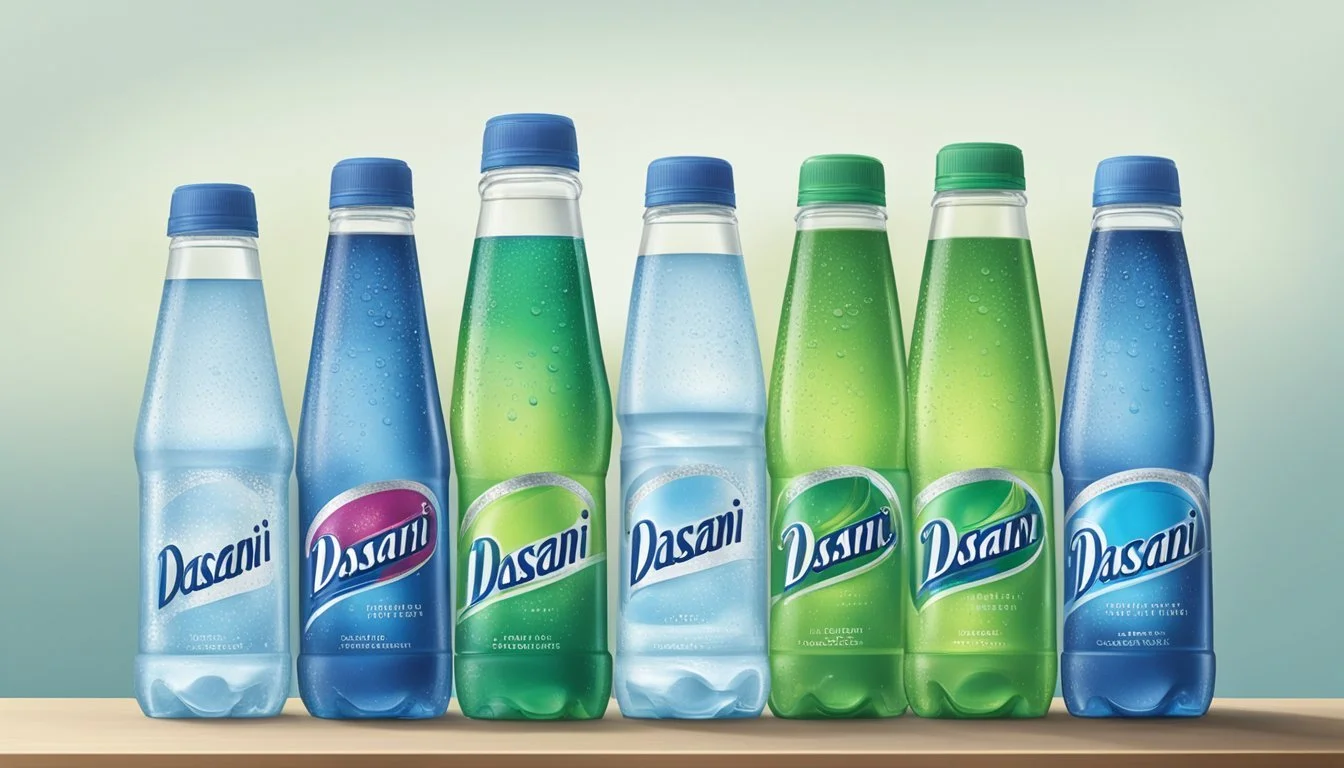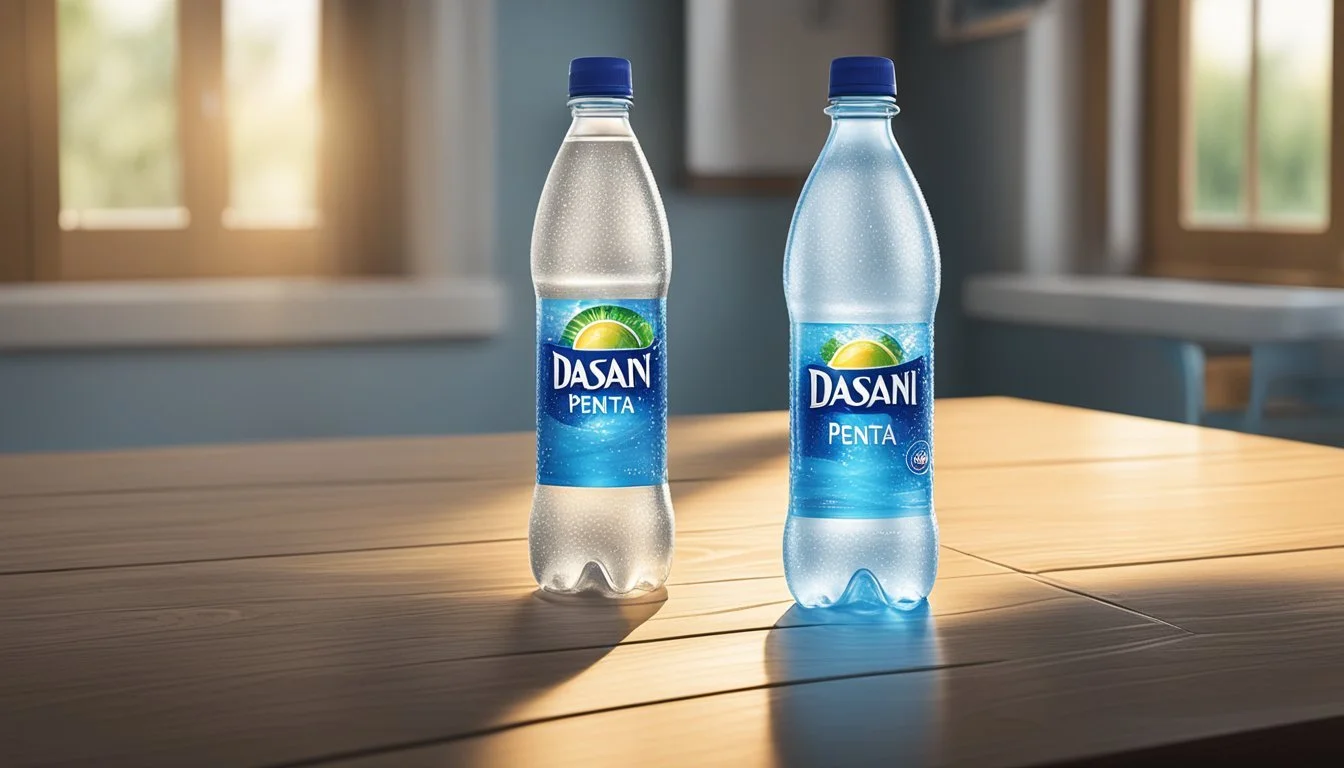Dasani vs. Penta
Comparing Quality and Taste in Bottled Water
Consumers globally have a plethora of choices when it comes to staying hydrated, with bottled water being a common choice for its convenience and perceived purity. Two brands that stand out on the shelves are Dasani and Penta. Dasani, a product of The Coca-Cola Company, is known for its wide availability and its use of minerals added for taste. Penta, on the other hand, prides itself on a proprietary ultra-purification process that claims to provide a distinctly clean and pure water.
Choosing between Dasani and Penta water is not just a matter of taste preference; it also reflects a consumer's values and priorities. Dasani's added minerals and Penta's purification process cater to different segments of the market. Some consumers favor the taste enhancement that Dasani claims, while others prioritize the purity level that Penta alleges. The decision between these two brands encapsulates a broader debate over the merits of added ingredients versus the quest for purity in bottled water.
Understanding Bottled Water
In exploring the realm of bottled water, it is crucial to consider its historical evolution and the various types available on the market.
History of Bottled Water
The commercialization of bottled water began in the 17th century, emerging as a commodity for those seeking the purported health benefits of mineral-rich waters. Over time, companies such as Evian and Perrier became synonymous with bottled mineral water. By the 20th century, advancements in purification technology broadened the market, introducing products like purified tap water from brands such as Aquafina and Dasani, as well as Coca-Cola's Smartwater. The FDA now regulates bottled water in the U.S., ensuring compliance with specific safety standards.
Types of Bottled Water
Mineral Water: Sourced from mineral springs, this type typically contains minerals like calcium and magnesium. Notable brands include San Pellegrino and Fiji.
Spring Water: Collected directly from a spring where water naturally surfaces, examples include Poland Spring and Arrowhead Mountain Spring Water.
Type Description Brands Purified Tap Water Treated to remove contaminants Aquafina, Pure Life Mineralized With added minerals for taste Smartwater, Essentia Sparkling Water Contains dissolved carbon dioxide Perrier, La Croix Alkaline Water Higher pH level Essentia, Icelandic Glacial
Natural mineral springs and artesian wells are tapped for brands like Evian and Voss, which offer naturally filtered water rich in trace elements. Filtered tap water, like LIFEWTR, removes chlorine taste and odor while some brands, such as Core Hydration and Eternal Water, advertise unique filtration processes like reverse osmosis and UV exposure, known as "Hydro-7", to eliminate contaminants like PFAS chemicals and heavy metals. With increasing focus on sustainability, brands like Boxed Water aim to reduce carbon emissions associated with packaging and transportation.
Comparative Analysis
This section delivers a detailed comparison between Dasani and Penta bottled water, focusing on aspects such as taste, health and safety standards, and environmental impact, providing a clear framework for consumers to understand the differences between these two brands.
Dasani Overview
Dasani, a product of Coca-Cola, is a widely recognized bottled water that employs a purification process that includes reverse osmosis and the addition of minerals for flavor. It is marketed as a pure, hydrating, and convenient hydration option. Dasani's source is purified tap water, which is then enhanced with a proprietary blend of minerals for a crisp taste.
Penta Overview
Penta is a premium bottled water known for its ultra-purified drinking water. The brand boasts a 13-step purification process that includes UV light treatment, reverse osmosis, and the addition of electrolytes without salt, resulting in a distinct purity and high pH level that claims to support optimal hydration.
Taste Profile Comparison
Dasani:
Minerals: Added for flavor enhancement
Salt: Trace amounts for taste
Penta:
Electrolytes: Included without salt for purity and taste
Flavor: Neutral, with a focus on purity
The addition of minerals and electrolytes affects the taste of each brand, with Dasani aiming for a more enhanced flavor and Penta prioritizing a clean and pure taste profile.
Health and Safety Standards
Both brands adhere to FDA regulations for bottled water, which includes limits on contaminants such as lead, arsenic, and mercury. Dasani and Penta both employ stringent purification processes, with Penta emphasizing its removal of more contaminants, including PFAS chemicals, bromate, and heavy metals, through a comprehensive multi-step process.
Environmental Impact
Dasani has faced criticism over its carbon emissions and use of plastic, while the brand has taken steps towards sustainability, like lightweight bottle design and recycled materials. Penta also places a focus on sustainability, with efforts to minimize their environmental footprint through responsible sourcing and packaging. However, like most bottled waters, the ecological impact of production and disposal of bottles is a significant challenge for the industry.
These brands' operations reflect a broader bottled water market that includes players like Nestlé, Aquafina, Perrier, Voss, and Fiji, all contending with similar environmental and health considerations.
Consumer Considerations
When evaluating bottled water brands like Dasani and Penta, consumers typically weigh factors like price, availability, and brand reputation.
Price Point Analysis
Dasani, produced by Coca-Cola, tends to be priced competitively, often falling within the lower to mid-range of bottled water options. In contrast, Penta is marketed as a premium water brand, which is often reflected in a higher cost. The price for both brands may vary depending on the retailer and location within the USA or Canada. For consumers, the decision may come down to whether the additional cost of Penta aligns with their perceived value in terms of hydration and mineral content.
Availability and Accessibility
Dasani, being part of the Coca-Cola portfolio, benefits from a robust distribution network. It is widely available in most supermarkets, convenience stores, and vending machines across North America. Penta, while less pervasive, can be found in select health food stores and higher-end markets. For customers in remote areas or with preferences for online shopping, both brands are accessible through various e-commerce platforms, though Penta's availability might be more limited compared to Dasani's broad market presence.
Brand Loyalty and Perception
Dasani has faced scrutiny and controversy in the past, some stemming from a misconception about its production process that was amplified by figures like Shane Dawson. Despite this, the brand maintains a strong loyalty base due to Coca-Cola's marketing efforts and the frequent inclusion of Dasani in public venues and partnerships with establishments like Starbucks. On the other hand, Penta targets a niche market interested in ultra-purified water, often appealing to wellness-focused consumers. Penta's reputation for high-quality water sometimes includes endorsements from a water sommelier or experts in the field of hydration and wellness, contributing to its loyal following.
Public Perception and Controversies
In the realm of bottled water, consumer perception and media coverage significantly influence brand reputation. Controversy can impact a brand's public image, while market positioning affects consumer preference and perception.
Dasani's Public Image
Dasani, a Coca-Cola brand, has faced various public relation challenges. Notably, in 2004, media reports indicated that Dasani was essentially filtered tap water, triggering a significant backlash. Further exacerbating the issue was the presence of additives in Dasani's formulation, which some consumers felt should not be in bottled water. The brand's public image took another hit when renowned YouTuber Shane Dawson criticized Dasani in a video, leading to revived scrutiny and debates across social platforms.
Penta's Market Position
Penta, on the other hand, has carved out a niche for itself by emphasizing ultra-purification processes and attaching itself to the health and wellness sector. Although not as widely discussed as Dasani, Penta maintains a relatively controversy-free reputation. The brand's positioning as a premium water has attributed to its image. The endorsements by water sommeliers and the emphasis on scientifically-backed purity have strengthened Penta's market position, with less negative media attention than some competitors.
Concluding Thoughts
When comparing Dasani and Penta bottled water, several factors come into play, including taste, hydration, sustainability, environmental impact, and health and safety.
Taste: Personal preferences vary, but some consumers report a distinct taste difference between Dasani, which is purified and enhanced with minerals, and Penta water, known for its ultra-purified quality.
Hydration: Both brands effectively hydrate, which is the primary function of bottled water. Decisions may be informed by individual taste preferences and sensitivity to mineral content.
Sustainability: Consumers increasingly factor in the environmental impact of bottled water. While both brands work to improve, they each have a carbon footprint related to production and transportation.
Environmental Impact: Packaging choices play a role in a product's environmental footprint. Penta and Dasani have undertaken efforts to increase sustainability in their packaging.
Health and Safety: Concerns have arisen regarding contaminants in bottled water. Penta boasts a rigorous purification process, while Dasani has addressed quality concerns and ensures compliance with safety standards.
It is imperative for consumers to consider these factors based on personal values and needs. While no brand can claim outright superiority on all fronts, the choice between Dasani and Penta should align with one's health priorities, environmental concerns, and taste preference. Each brand has its strengths and has taken steps to address consumer expectations in terms of product quality and environmental responsibility.




